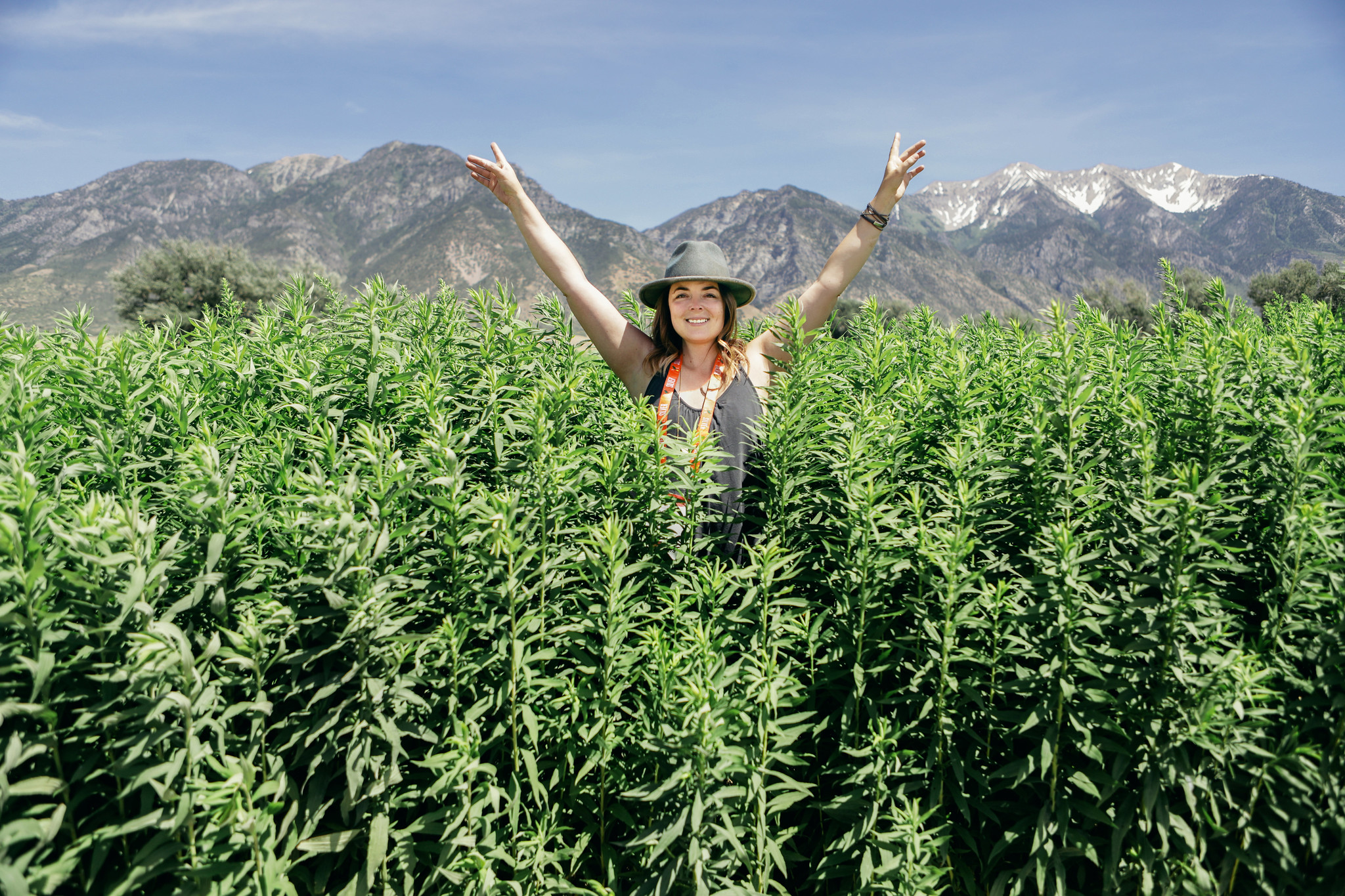Why are Young Living oils so different to other brands
6.09.2024
In our previous post, I shared with you the magic of essential oils and why they work. But did you know this magic rarely makes its way into the bottles of essential oils that most consumers buy?
This is because virtually all essential oil producers work to perfume industry standards. Whilst this will produce a lovely smelling oil, it captures only part of the essential oil fingerprint. A partial fingerprint means an unbalanced oil. It makes sense that this simply won’t give you the same results as an essential oil containing the complete fingerprint.
I love Young Living because of their dedication to capturing the complete fingerprint of the essential oil, so that all of that magic of nature ends up in our bottle of essential oils. They truly are the world leader in essential oils.
When you understand what goes into producing oils of this calibre, it makes perfect sense that our oils are more expensive than other brands.
It’s like comparing a Hyundai to a Ferrari. Both are cars, right? Both allow us to drive from point A to point B. But the experience of using these 2 brands is completely different.
So today, let’s do a deep dive into what sets our essential oils light years apart from other brands.
We are Artisans of Essential Oils
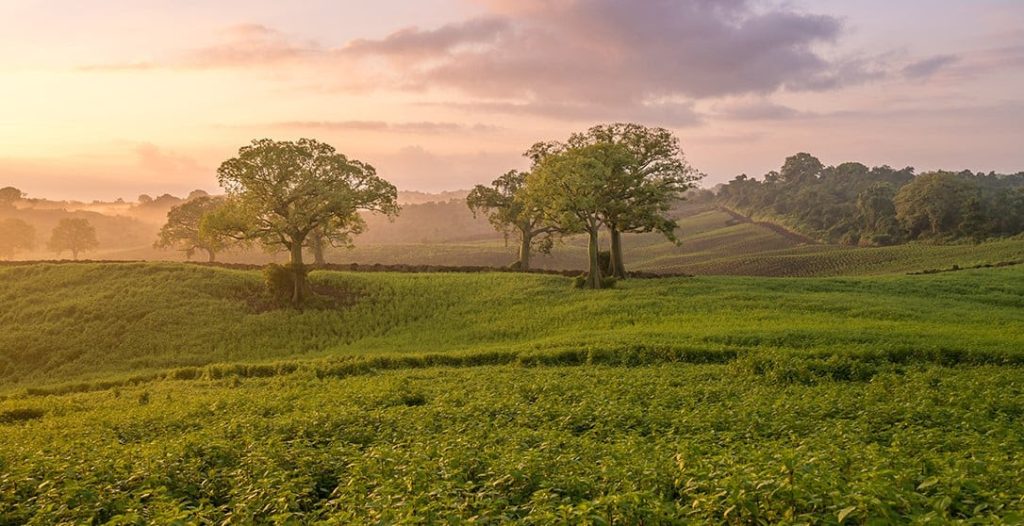
Did you know that Young Living is the largest producer of therapeutic-grade essential oils on the Planet?
When Gary Young (the founder of Young Living) first came across therapeutic-grade essential oils, he saw firsthand the difference in results between these and other regular brands.
It was the results he experienced in his own body that inspired him to want to grow and produce essential oils of a quality that the world had never seen before.
Most essential oil companies are marketing companies that sell essential oils. They buy their products through brokers, re-brand them and then on-sell them under their own label.
They love essential oils – but their focus is on promoting the end product to their consumers. They don’t have their fingers in every piece of the production process, because they are buying a finished product that someone else has produced.
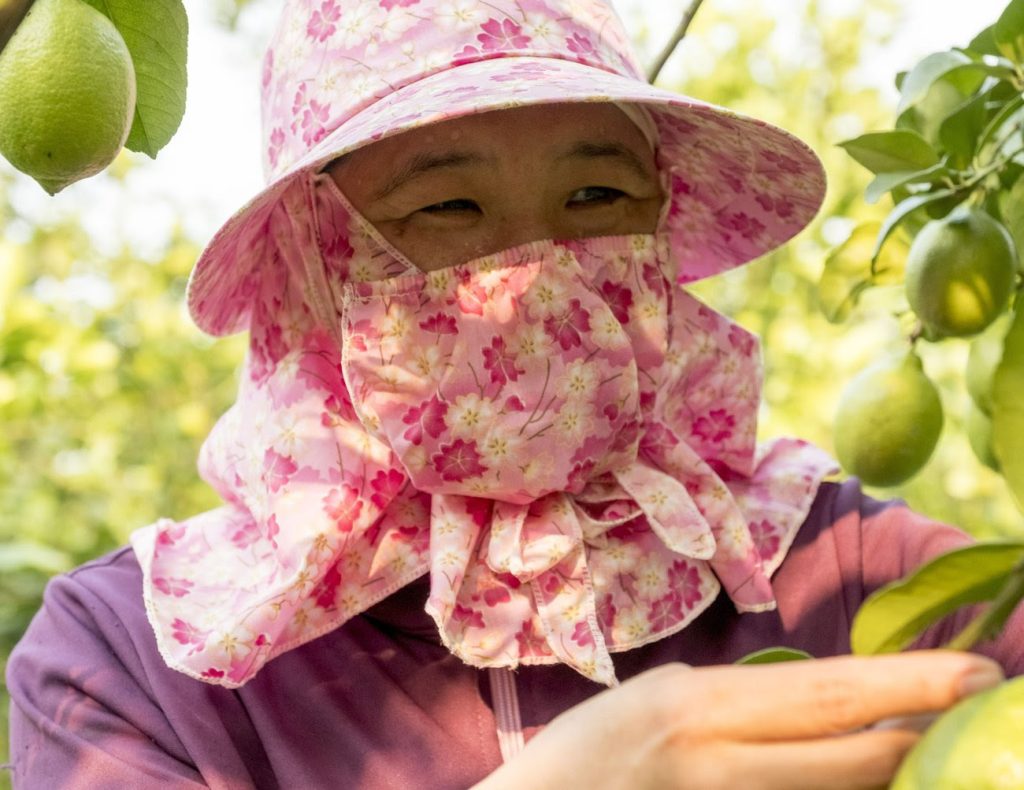
In contrast, Young Living is an essential oil producer. Yes, we do marketing and education. But our real focus is on the production of the essential oils, from Seed to Seal ®.
We have over 30 years of experience in the farming, distillation and testing of therapeutic-grade essential oils, which has
allowed us to master every step of that process.
We grow plants on our own farms and partner farms. In fact, Young Living currently has 24 farms and partner farms in 16 countries – WOW!!!
Our members are welcome to visit these farms, to see for themselves the care that goes into our oils. I’m a testament to that, as I’ve had the privilege of visiting 14 of these farms over the years!
We also source from our Seed to Seal ® certified suppliers – these are farmers who have gone through rigorous audits, testing and training, to ensure they meet Young Living’s stringent quality standards.
We are Pioneers in Essential Oil Production
As a company, Young Living has always been purpose-driven, not profit-driven. This is very much thanks to our founders, Gary and Mary Young, and the values by which they have lived their life.
Gary Young was a pioneer. Since his passing in 2018, his legacy lives on through the values he instilled in his company, and the many people he inspired and trained. The Spirit of discovery and innovation is inherent to the Young Living brand.
With this pioneering spirit, Gary made many discoveries that are infused into ourSeed to Seal ® process, and which are proprietary to Young Living and their partners. Other companies can aspire to match our
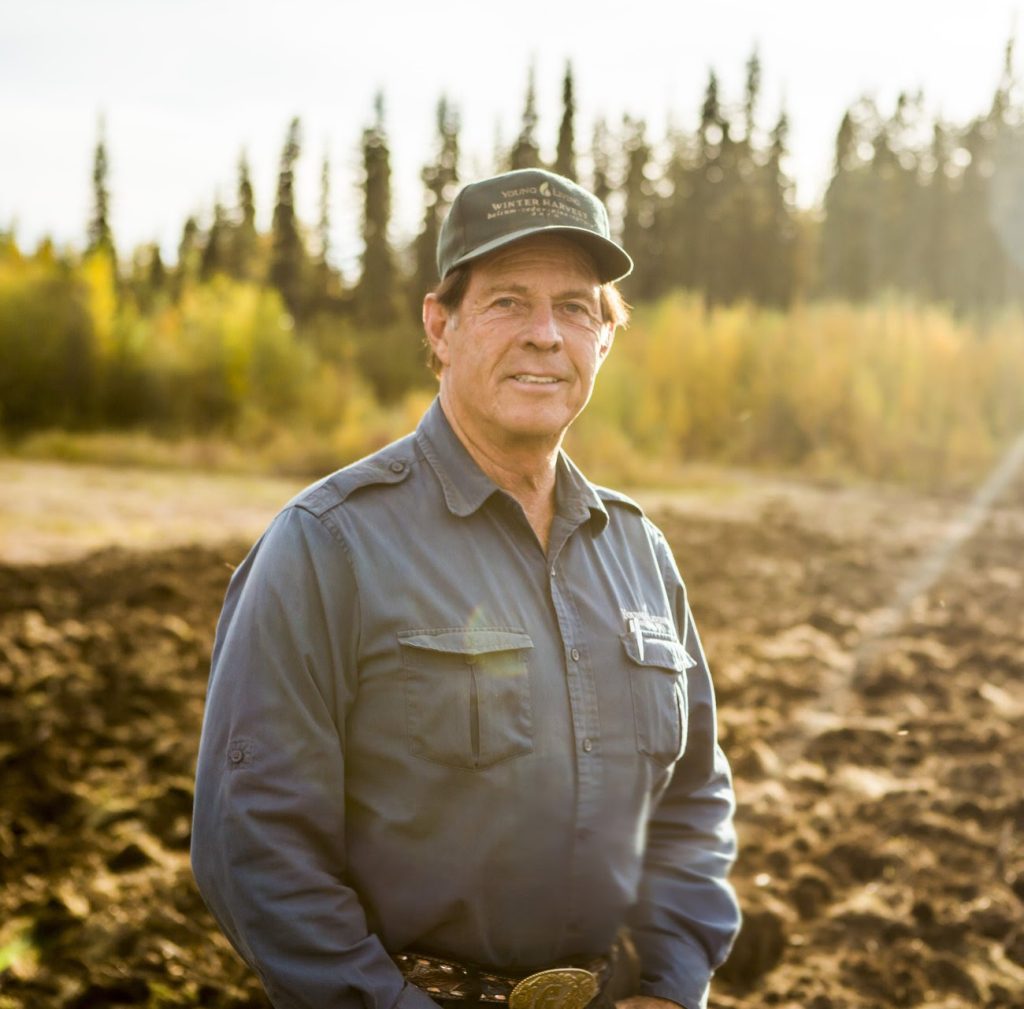
standards. But unless they are leaders in essential oil production, they will miss the magic ingredients, and you will feel the difference.
Gary was a farmer at heart, and he was always looking for how to get the most from each plant.
What nutrients did he need to put into the soil? When is the absolute best time to harvest that particular plant? Once it’s harvested, should it be distilled straight away, or does it like to lie for a few hours or days before being distilled? How long should he distil for, to capture the entire fingerprint?
It’s this thirst for knowledge combined with experience, inventiveness and intuitiveness which keeps us at the cutting edge of essential oil production, and always going above and beyond.
Our Oils are Alive – Feel the Difference!
In our previous post, I shared with you how essential oils are made up of a complex “fingerprint” of compounds. Where the majority of producers extract the main aromatic molecules and end up with a partial fingerprint (ie. a pretty smell), Young Livng’s focus is to capture the entire fingerprint.
This means our oils are alive in your bottle, just as they are in nature. This is the magic ingredient that gives the Young Living oils the ultimate potency, frequency and innate intelligence, so that you’ll experience results from every drop.
There are various steps to achieve this outcome. Here are just a few:
Farming
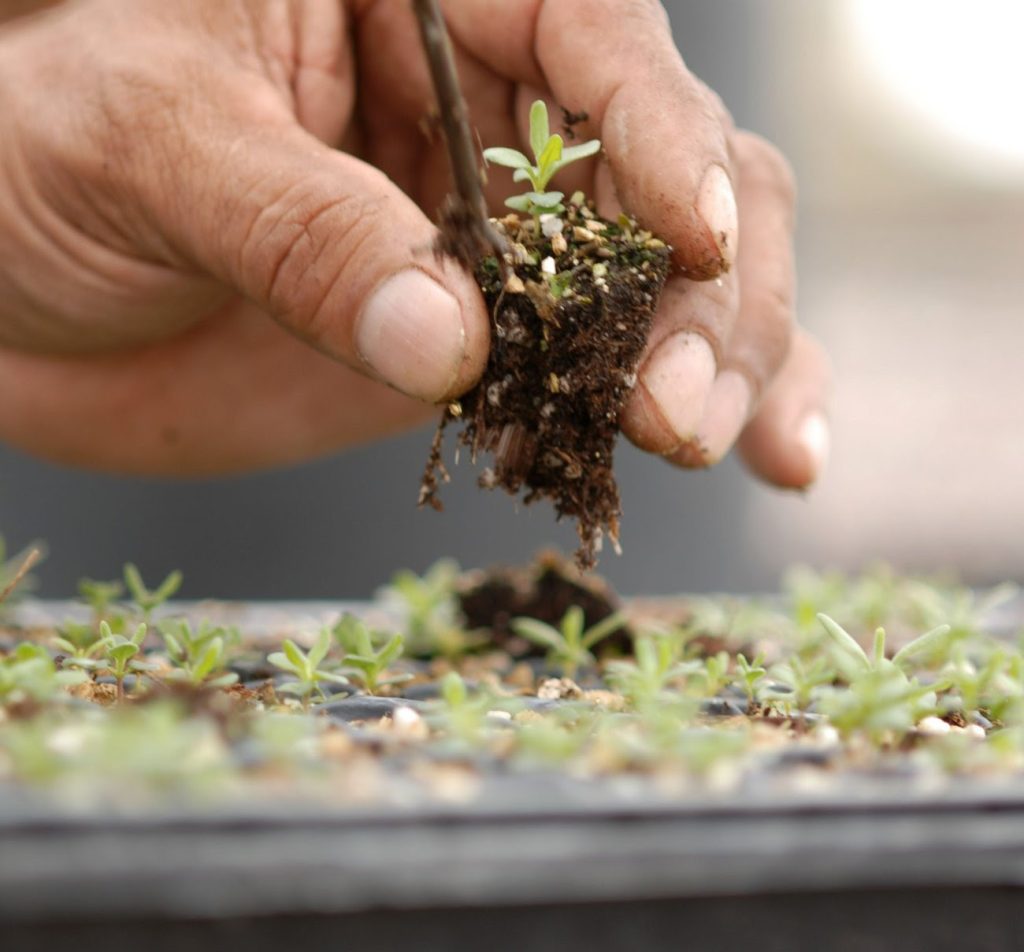
1. We use non-GMO seeds from healthy plants, rich in bioactive compounds.
2. No chemicals touch our fields or our plants at any point in the growing, distillation or bottling process. This makes our oils “beyond organic”. We use spring water on our fields, we nourish the soil with enzymes, manure and worm castings, and we use natural pest and weed control.
3. Where other companies will spray their fields with chemicals to control weeds, Young Living manages weeds using companion planting and regenerative farming techniques, as well as manual labour. On our Mt Nebo Botanical Farm in Mona (Utah), we use sheep to weed the crops. Since sheep dislike Lavender’s floral scent, they leave the Lavender alone, and just eat the weeds.
4. We also understand the effects of vibration, so if a worker doesn’t love plants or is having an unhappy day, they don’t go on our fields.
5. We invest time and energy into discovering what our plants love.
Did you know? Helichrysum (the everlasting daisy, aka l’Immortelle) loves growing in a rocky soil. But what size rock does it prefer? In conjunction with our partner farm in Croatia, Gary did an experiment. He brought rock crushers in, and trialled a series of Helichrysum crops side by side. The only difference was that each field had a different size of rock in it (one field with large rocks, one with mid-sized rocks, and one with small rocks). And do you know what Gary discovered? Helichrysum thrives the best when the rocks are small.
Harvesting
Loving a plant is like loving a woman. As women, we have our own likes and dislikes, and we are truly unique in how we like to be treated. Some women like it hot, some like it spicy, some like it romantic and some like to be revered.
Plants are no different. Young Living loves plants, so they take the time to understand their needs – not just when growing, but also when harvesting.
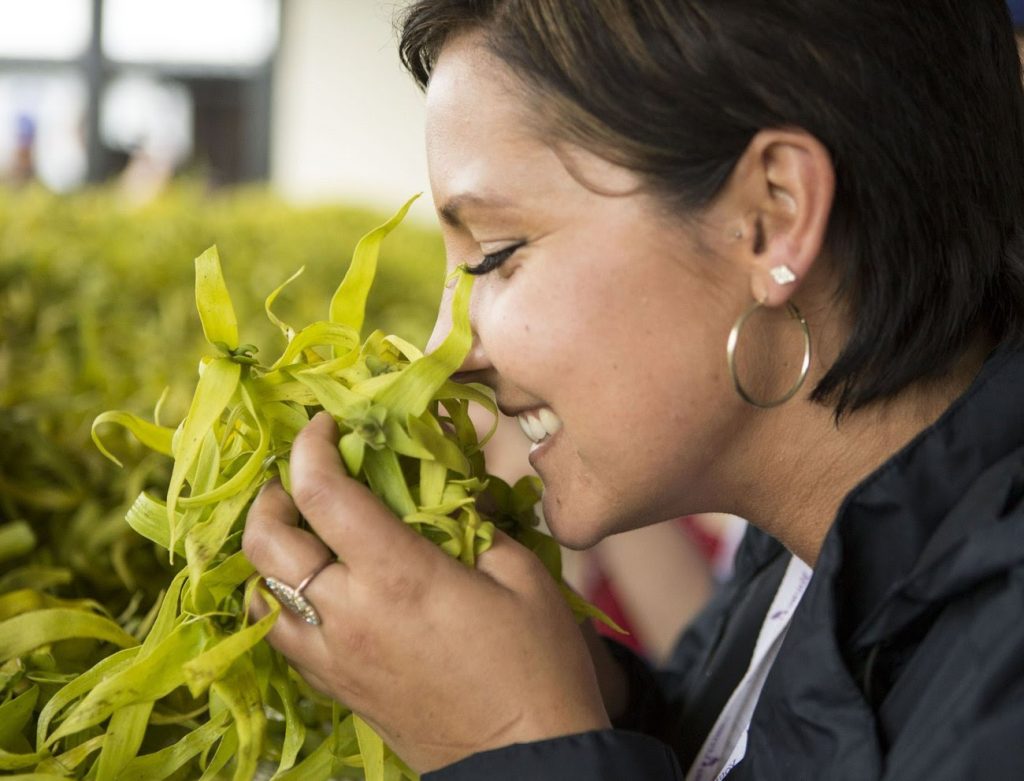
Here are some great examples:
1. Melissa (Lemon Balm) doesn’t like to lie on the ground after she’s been harvested. In the past, farm workers and brand partners would walk behind the harvester with hessian sheets to catch the freshly-cut plant material. Then Gary modified his machinery so the cuttings are now automatically collected, and never touch the ground.
2. Jasmine and Ylang Ylang blossoms must be collected in the early morning or late afternoon when their fragrance is strongest. That fragrance is the essential oil, so we get the most abundant and rich essential oil at these times of day.
3. Where other companies simply harvest Lavender in the correct season when the flowers are blooming, Young Living goes that extra step and harvests when the glucose content in the plant peaks. They use a Brix meter to measure glucose content throughout the day during the flowering season, and once it peaks, that’s when they harvest. But there’s more to it than that. After cutting, if you dry your Lavender out for several days before distilling, it will convert glucose into essential oil, giving you a richer oil. How cool is that?

Artemis writes: I went to my first Lavender harvest about 20 years ago. Noel and I flew all the way to Young Living’s St Maries farm in Idaho. When we arrived, Gary told us that we probably weren’t going to be harvesting that week.
It didn’t matter to Gary that we’d travelled halfway across the globe for the experience of harvesting.
What mattered to him was doing what the plant needed, in order to get the best essential oil (even if that was inconvenient to the visitors).
Well, as it turned out, one day we decided to all go out on an adventure white water rafting, since we weren’t harvesting.
We were just about to leave for our adventure when one of the Young Living farm staff ran in. He’d just checked the Brix meter, and the glucose in the Lavender had unexpectedly peaked. Our rafting trip got cancelled, and within an hour we were all out in the fields helping with the harvest.
This experience really showed me where Young Living’s priorities lie, and the ultimate care they have for creating the “perfect” essential oil.
Distillation
One thing that really sets Young Living apart from other companies is the low temperature and low pressure distillation techniques that they employ, in order to extract the essential oil from the plant.
Where most other companies use high temperature and high pressure to distil their oils much faster (this giving them a better profit margin), Young Living uses this gentle process to ensure that all the fragile molecules that make up the plant’s essential oil fingerprint are retained.
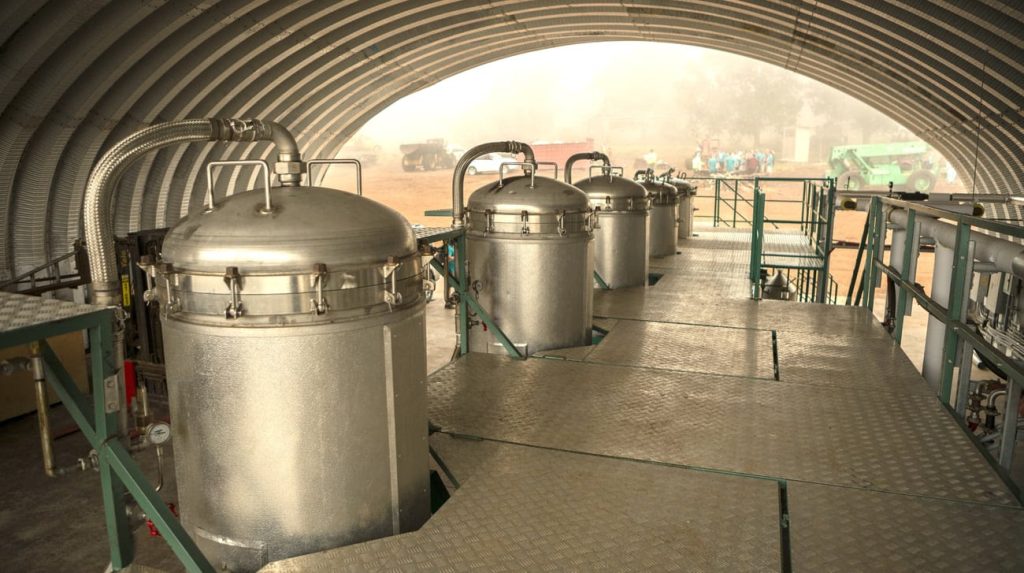
High temperature and high pressure distillation techniques will still leave you with a lovely smelling essential oil….but it won’t have all those amazing plant molecules working in synergy that is needed for a truly therapeutic-grade essential oil.
The timing of the distillation is also important for some plants. For example, the Palo Santo tree only releases essential oil from its wood 5 years after the tree has died naturally. If the tree is cut down in order to obtain its wood, no oil is produced. And even though the wood has been dead for 5 years or more, the oil in the wood still responds to the lunar cycle, so it needs to be distilled on the new moon to quarter moon to obtain the best yield of essential oil from the wood chips.
This is a great example of the uniqueness of each plant, and how we need to have a love affair with every plant in order to discover what it desires, to then obtain the best from it.
The other important aspect is the length of distillation. Where other companies generally follow perfume industry standards with their distillation times, Young Living has done extensive research to understand just how long a plant needs to be distilled in order to capture the complete fingerprint. For example:
Using a traditional distillation chamber, Lavender is normally distilled for 45 minutes. But Young Living discovered that it needs to be distilled for 90 minutes to capture the full fingerprint. Then they went on to innovate a whole new style of distillation chamber which captures all the constituents (what would normally take 90 minutes) in half the time.
Cypress oil is typically distilled for 2 to 3 hours. But when Young Living did research into Cypress, they discovered that it should be distilled for 24 hours, because 18 key active constituents come out in the last 20 minutes. If you distil for 23½ hours, you miss those constituents.

So this means that other companies are doing 8 or more distillations in the time it takes Young Living to do one!!! More than anything, this helps to explain why the Young Living oils cost a little more than other brands. It’s because of all of this extra care that goes into them.
Did you know? Distillation time is an important factor in the end cost of an essential oil. One of the biggest expenses in distillation is the running of the boiler that produces the steam that breaks down the plant matter and in turn releases the essential oils from the plant. If a company can reduce the time taken to distil, they stand to make a much greater profit.
That’s why many companies add chemicals into the distillation chamber during this distillation process, to break down the plant matter faster. These chemicals make their way into your bottle, and can cause skin reactions and other problems for the body.
Young Living uses NO chemicals at any point in the production process, so that we know we’re getting a truly “clean” essential oil.
Testing
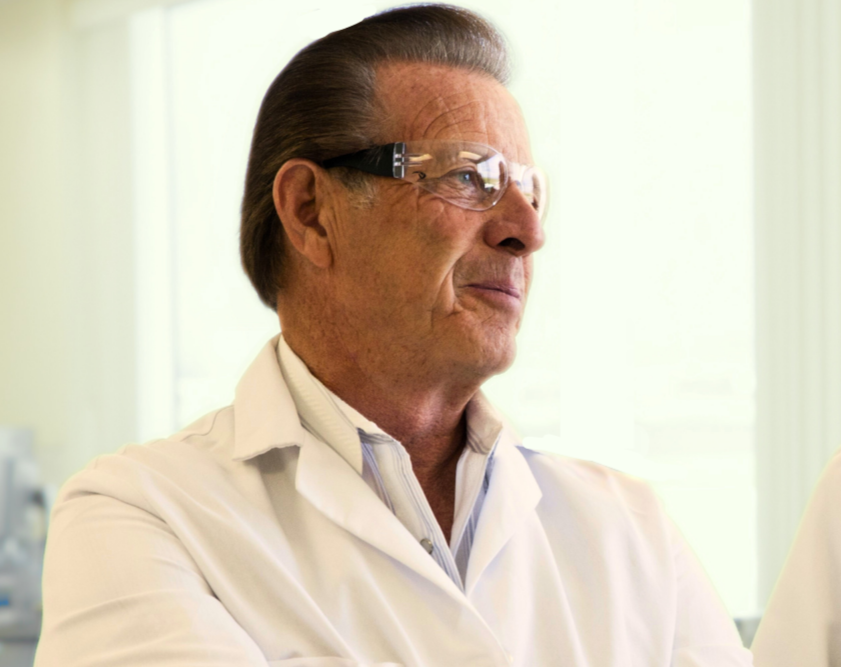
Unscrupulous growers stand to make a lot of money if they can hoodwink their brokers and end users, so adulterating essential oils has become an art form.
French scientist Dr. Herve Cassabianca is a world-renowned expert in essential oil chemistry. He assists in court cases where a purchaser claims they’ve been sold an adulterated essential oil.
I went to a fascinating presentation by him many years ago at a Young Living convention, where he explained that each year he’s having to come up with more advanced testing to be able to detect adulteration in essential oils. The regular tests like gas chromatography which most essential oil companies use are no longer reliable in detecting all synthetic adulterants.
Fortunately he was Gary Young’s friend and mentor, and has helped to advise Gary and Young Living in the art of testing.
Young Living have built on this, and we now have one of the most extensive essential oil “chemical libraries” in the world, with well over 700,000 molecules for reference. Every essential oil that we produce goes through 15 state-of-the-art tests 3 times before and 3 times after bottling. That’s 90 tests in total! That means we are better equipped than virtually any other essential oil supplier to analyse essential oils, and detect adulterants and synthetics.
Unlike other brands, Young Living doesn’t just test random batches of essential oil. Every single batch is tested.
Best of all, we never compromise on quality. If an oil doesn’t meet our standards and pass all of those tests, it’s not sold to you. That’s how Young Living can guarantee that their oils are truly pure and unadulterated, and safe for use by you, your family and your animals.
Caretakers of our Planet
So you understand that we love and care for plants. However, one of Young Living’s pillars is our Social Impact.
This is a long-range vision, which is about taking care of the Planet and her people. After all, when we take care of nature, she takes care of us.
This is why Young Living has such a strong culture around sustainability and reforestation, and giving back to the earth through conservation projects around the world.
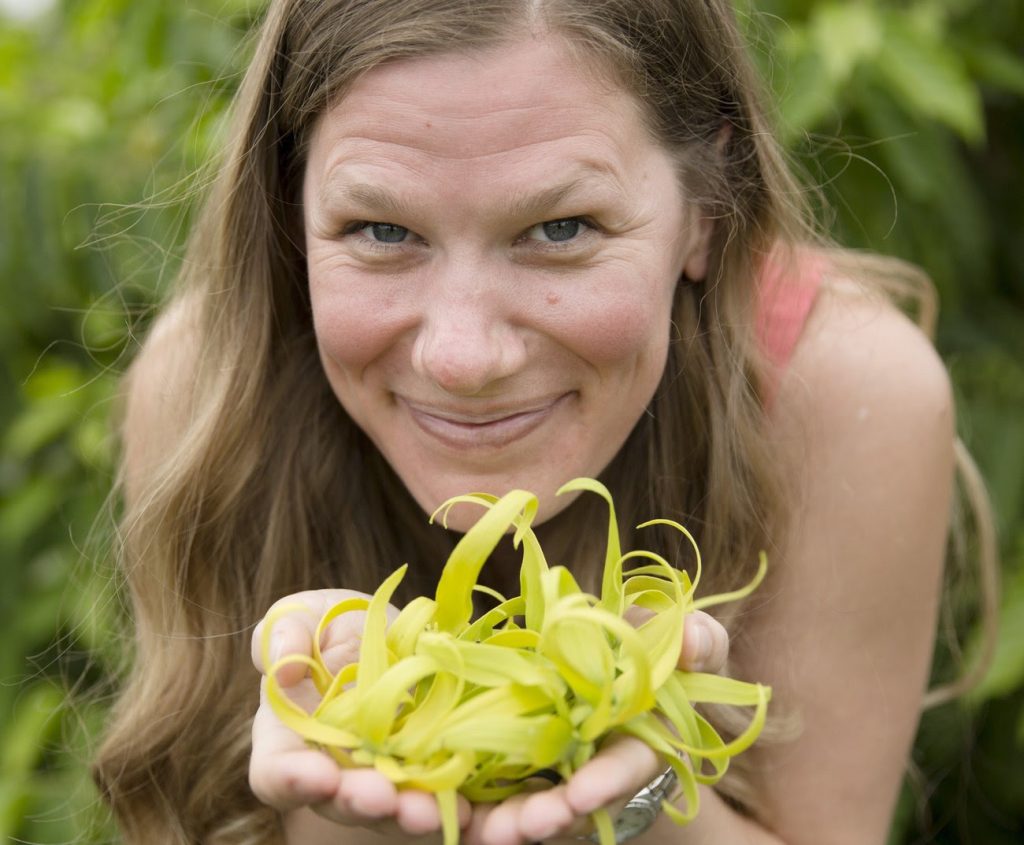
For example, Young Living has been creating Monarch butterfly waystations on their farms in Utah.
It takes 5 generations of Monarch butterflies to undertake their migration from Canada to Northern Mexico. With so much land clearing going on, they really need our help. Young Living plants milkweed and other butterfly-friendly plants, to ensure the butterflies can rest and feed and have a safe haven for their long journey.
Young Living’s Skyrider Wilderness Ranch in Utah is also the site of the D. Gary Young Wildlife Sanctuary, a conservation corridor held by The Nature Conservancy that spans about 10,880 acres.
The Sanctuary is part of an area called the “Utah Serengeti”, due to the large herds of elk and deer that migrate through that area. The Skyrider Wilderness Ranch maintains plots of land specifically to help these animals through the harsh winters. It also serves as Utah’s first nursery for vulnerable desert bighorn sheep, through a partnership between Utah and Nevada.
If you’d like to learn more about Young Living’s farms and Seed to Seal ® process, check out these links below:
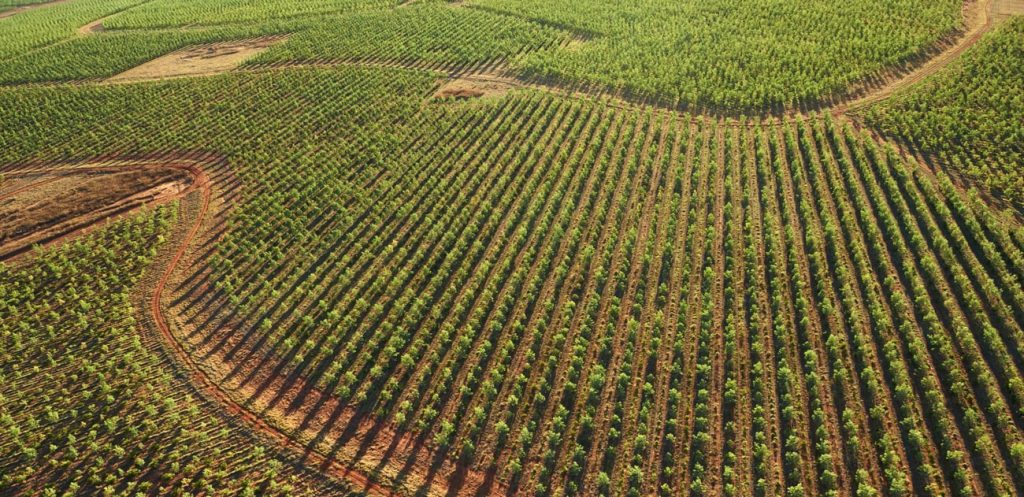
How to order….
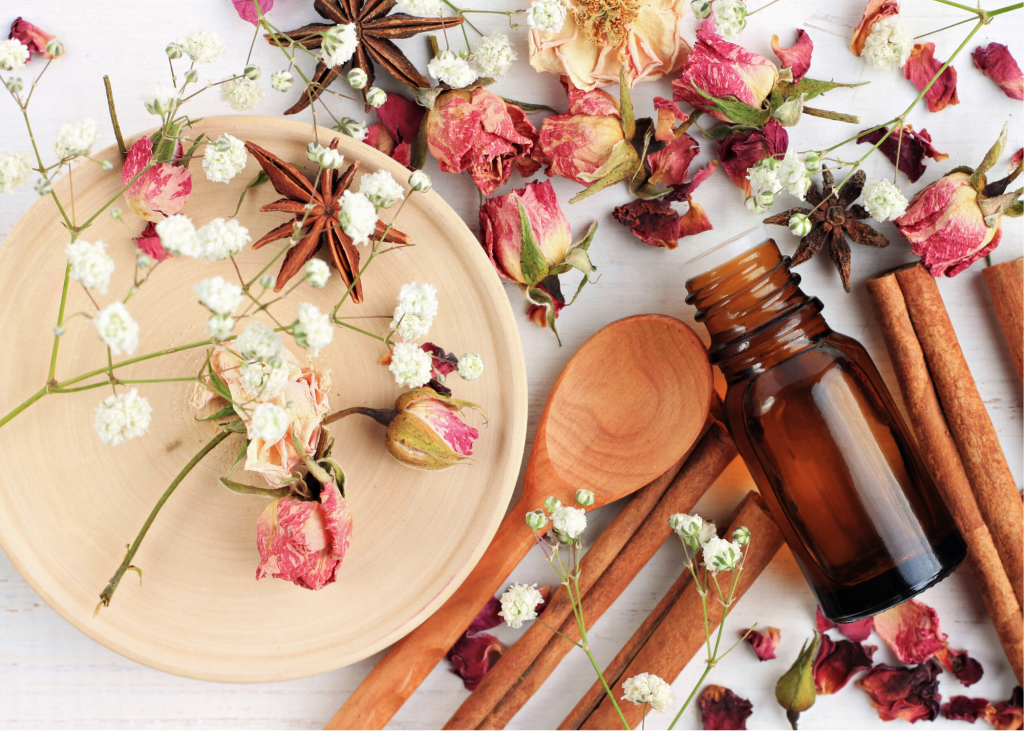
If you already have your own wholesale account with Young Living, you can order now through the shopping cart on your virtual office, or via phone or live chat with your local Young Living office.
If it’s been more than 12 months since you’ve ordered, or if you’ve never set up an account, please reach out to the person who introduced you to Young Living.
You will need their member number when you place your first order.
If you have lost touch with them, or need any other assistance, we are here to help. Simply click the button below and we’ll be in touch to assist you and help answer your questions.
